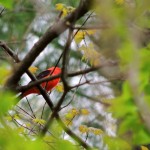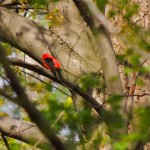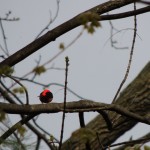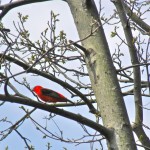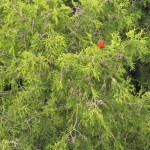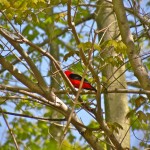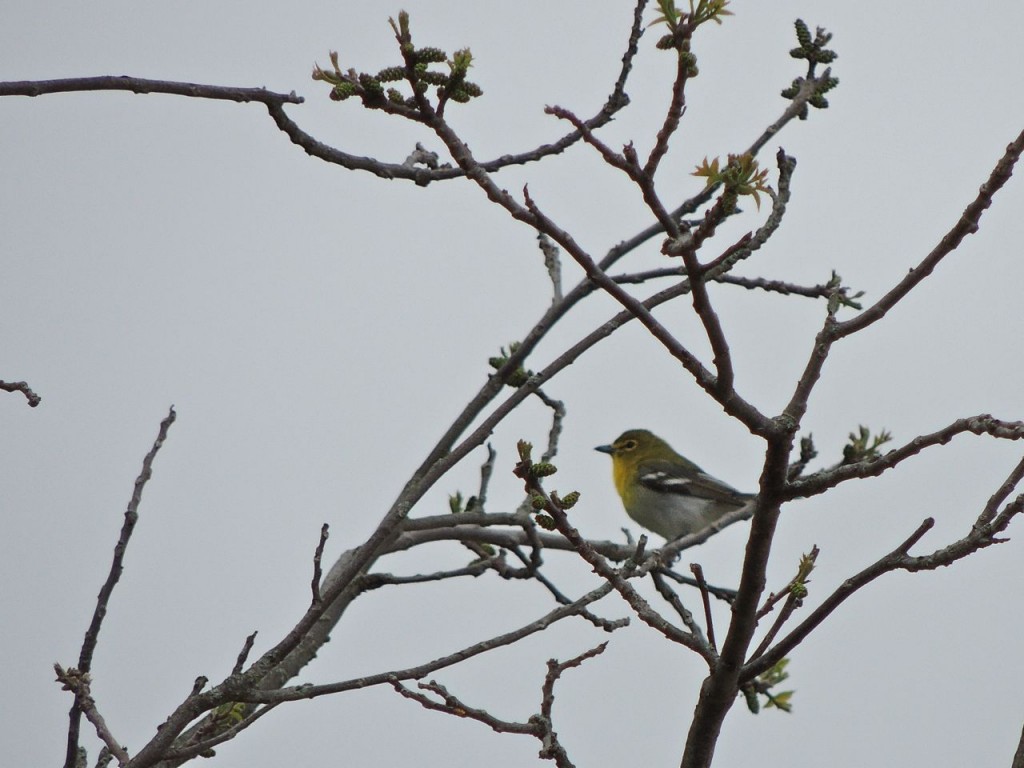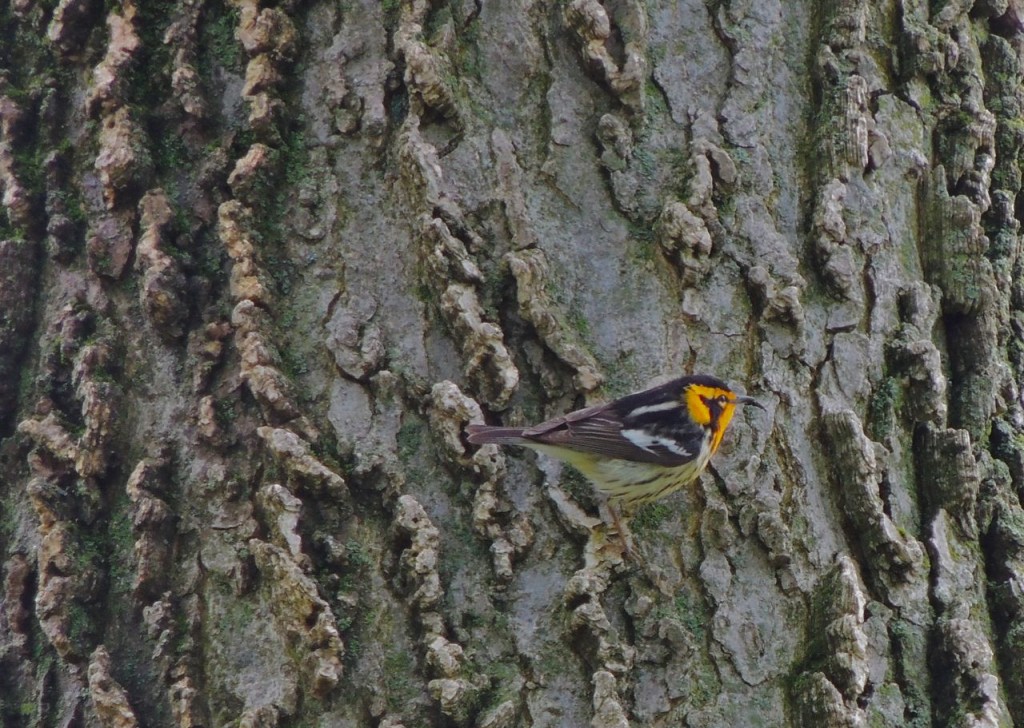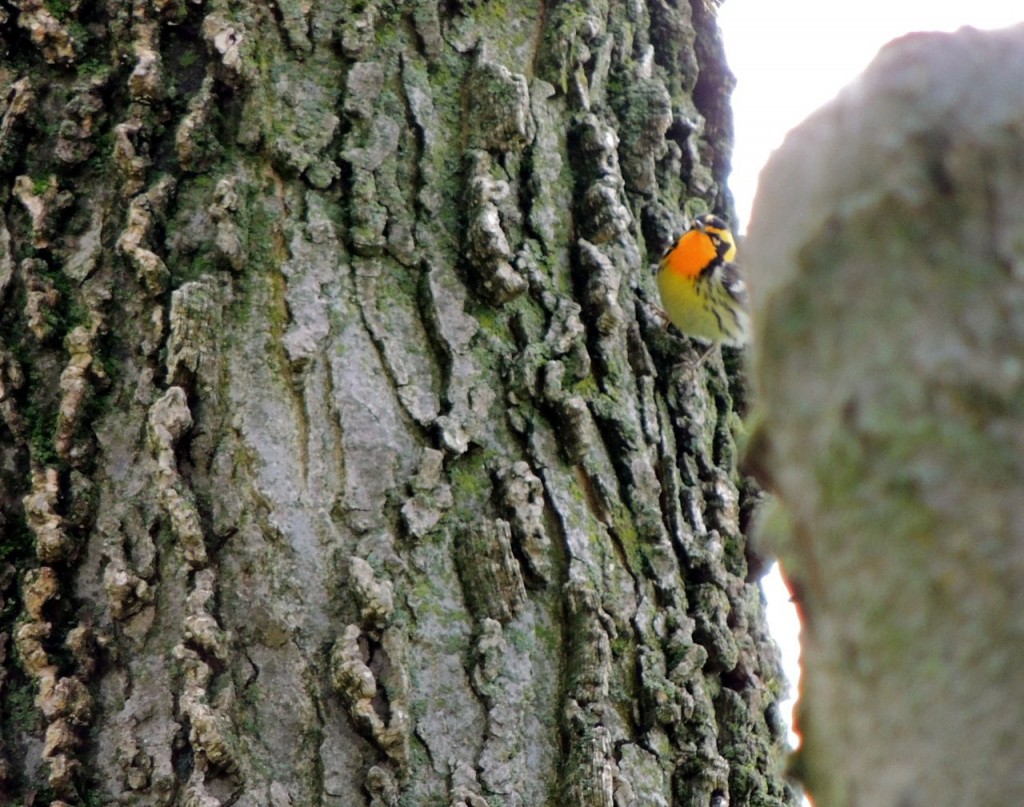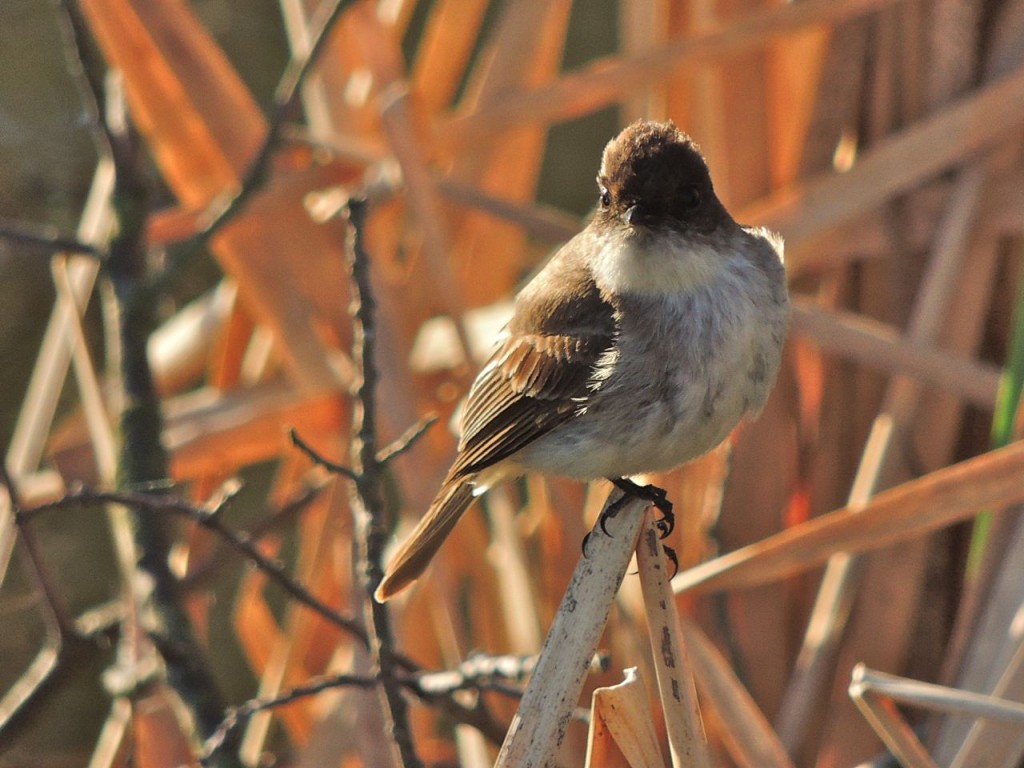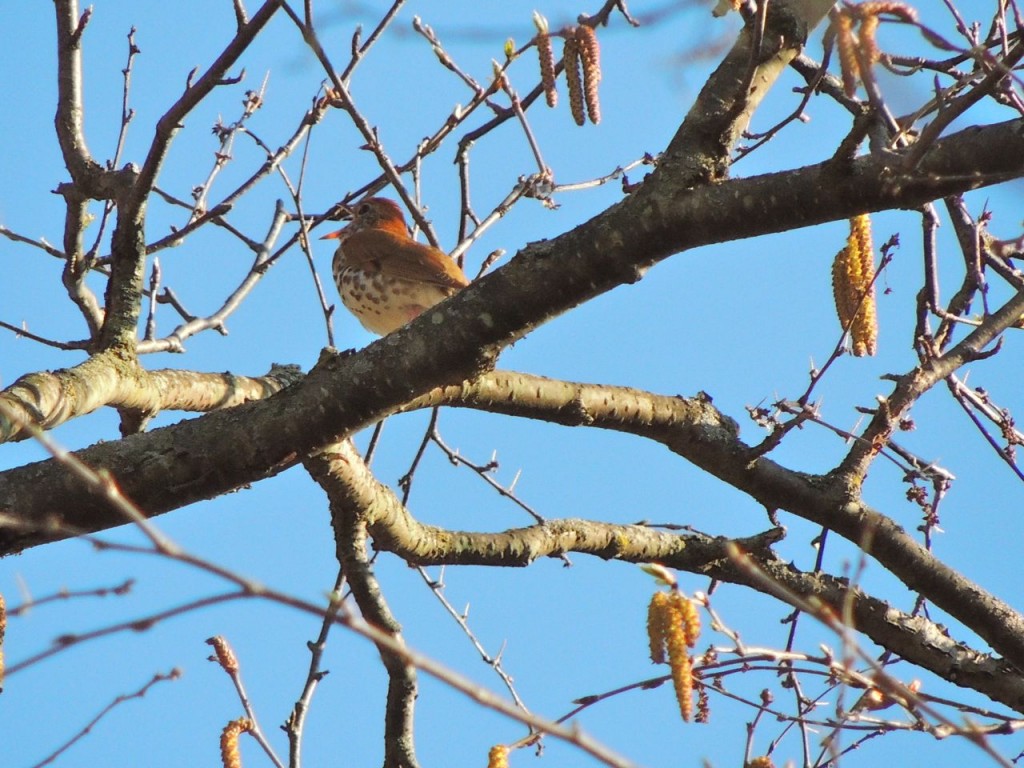The afternoon of 16 May 2014. Hamilton ON. I’m sure that my afternoon companions would have bet heavily on two other birds species as odds-on favourites to be my Bird of the Day, they’d choose either a Pileated Woodpecker or a Scarlet Tanager I’m sure, but surely not a Swainson’s Thrush. Sorry to disappoint.
I had been invited by an enthusiastic young (by my standards) birder to join him and assorted friends on an after-work birding walk. That, I thought, was a refreshing idea; add new company and younger eyes to a familiar location and who knows what might happen. Four of us set out and were soon admiring a bunch of Baltimore Orioles, and shortly thereafter found a Chestnut-sided and some Tennessee Warblers. Then I saw and with an air of triumph, pointed out a Swainson’s Thrush lurking low in a small stand of Paw-paw trees. We watched it for a while, distracted by Red-eyed Vireos and songs of more Tennessee Warblers. The thrush excited me while my companions understandably were less enthusiastic, hardly a glamorous or dazzling bird, but I love Swainson’s for their understated coolness and heart-stopping song (about which more later).
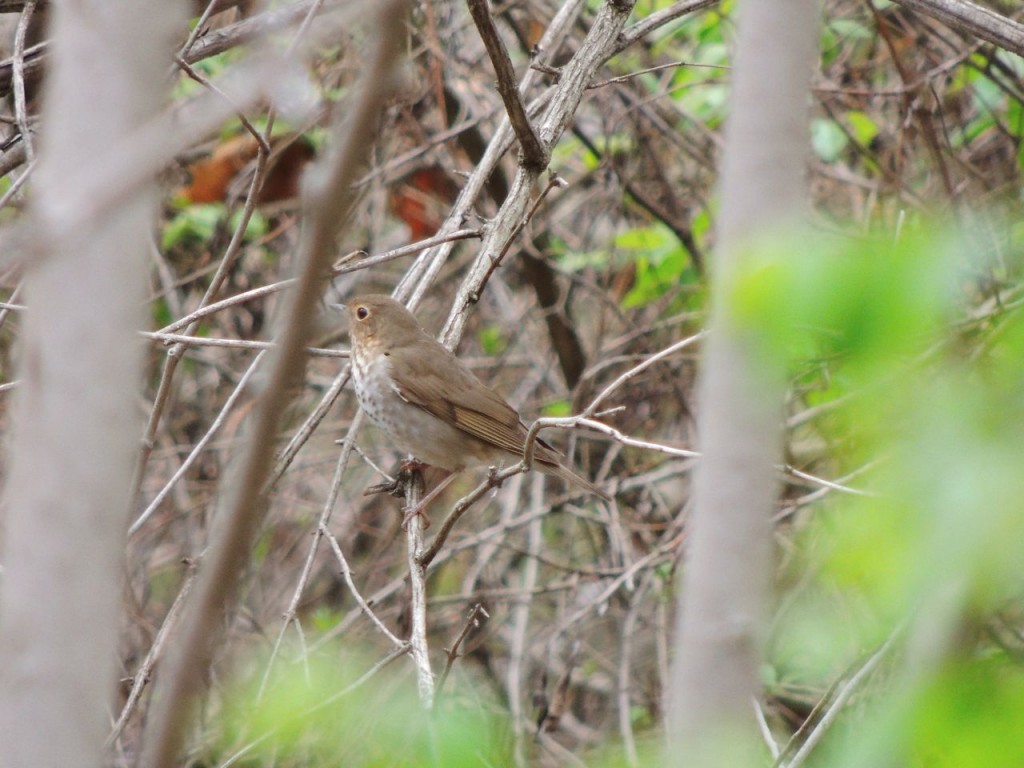
Moving on, we encountered a fabulous Pileated Woodpecker picking and bashing away at ground level woody debris. These wonderful birds rarely allow you a really good look at them; they tend to peek out shyly from the other side of a tree trunk or vanish into thick cover. Having said that, I know many who have enjoyed long lingering encounters with Pileated Woodpeckers, so it’s not that you never get a really good look, it’s just that it’s rare. Too bad, for they are a sensational creature: startlingly handsome and masterful, but well, shy.
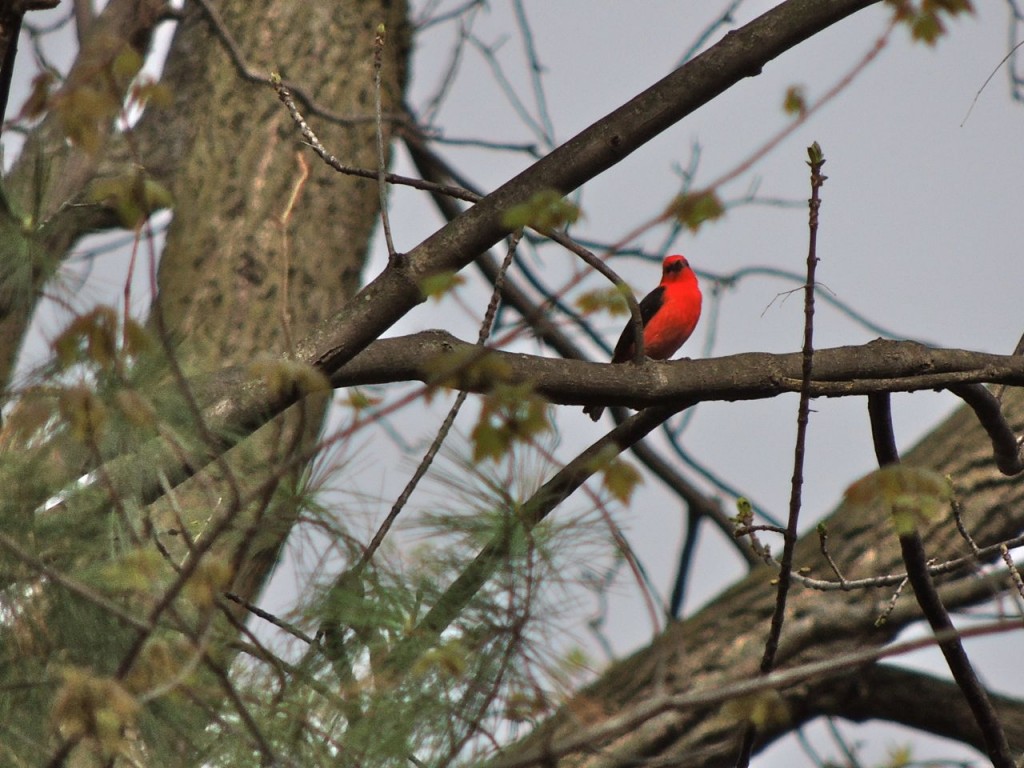
We heard Pine Warblers trilling from high in some White Pines, got a glimpse of a Black-throated Blue Warbler, and just like pulling a rabbit out of a hat we greedily enjoyed several brilliant Scarlet Tanagers. It’s hard to explain the intensity of their scarlet, but on my drive home I realized how much they explode red like a traffic light. Over the years I have taken many really crummy pictures of Scarlet Tanagers. Like this morning’s Yellow-throated Vireo, they don’t stay still for very long (although admittedly longer than the vireo) and they are often facing the wrong way or partially obscured by tree bits. Add to that the need to zoom in and focus and well, good shots are few and far between.
(This post contains more photos of the Tanager in a gallery visible only on the website, not if you’re reading this as an email.)
But, here’s how it is that the Swainson’s Thrush ended up as Bird of the Afternoon (maybe even Bird of the Day); it’s their song. As we wrapped up our after-work birding walk afternoon was giving way to evening and several Swainson’s Thrushes started to sing. It makes sense that there were others around for, although we had seen only a single bird, when it comes to migration, species often spread through the land on a broad front, like a large wave. The Swainson’s Thrushes’ songs are melodiously dreamy and we were in the grassy lower level of a lilac dell when I heard them, a setting worthy of a Victorian poet. I would have liked to take more time to draw the others’ attention to the songs, but we were in something of a hurry to leave on account of a waiting, pre-ordered pizza and other domestic demands of a young father. But all is not lost, to get a full appreciation of the Swainson’s Thrushes’ song, follow this link, listen to a few song recordings and at least mentally place yourself in a spring woodland.
